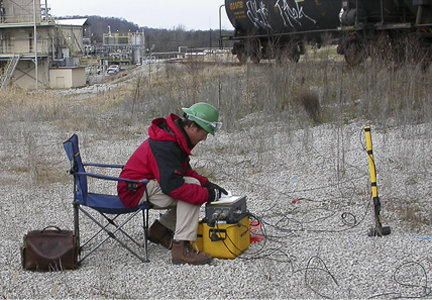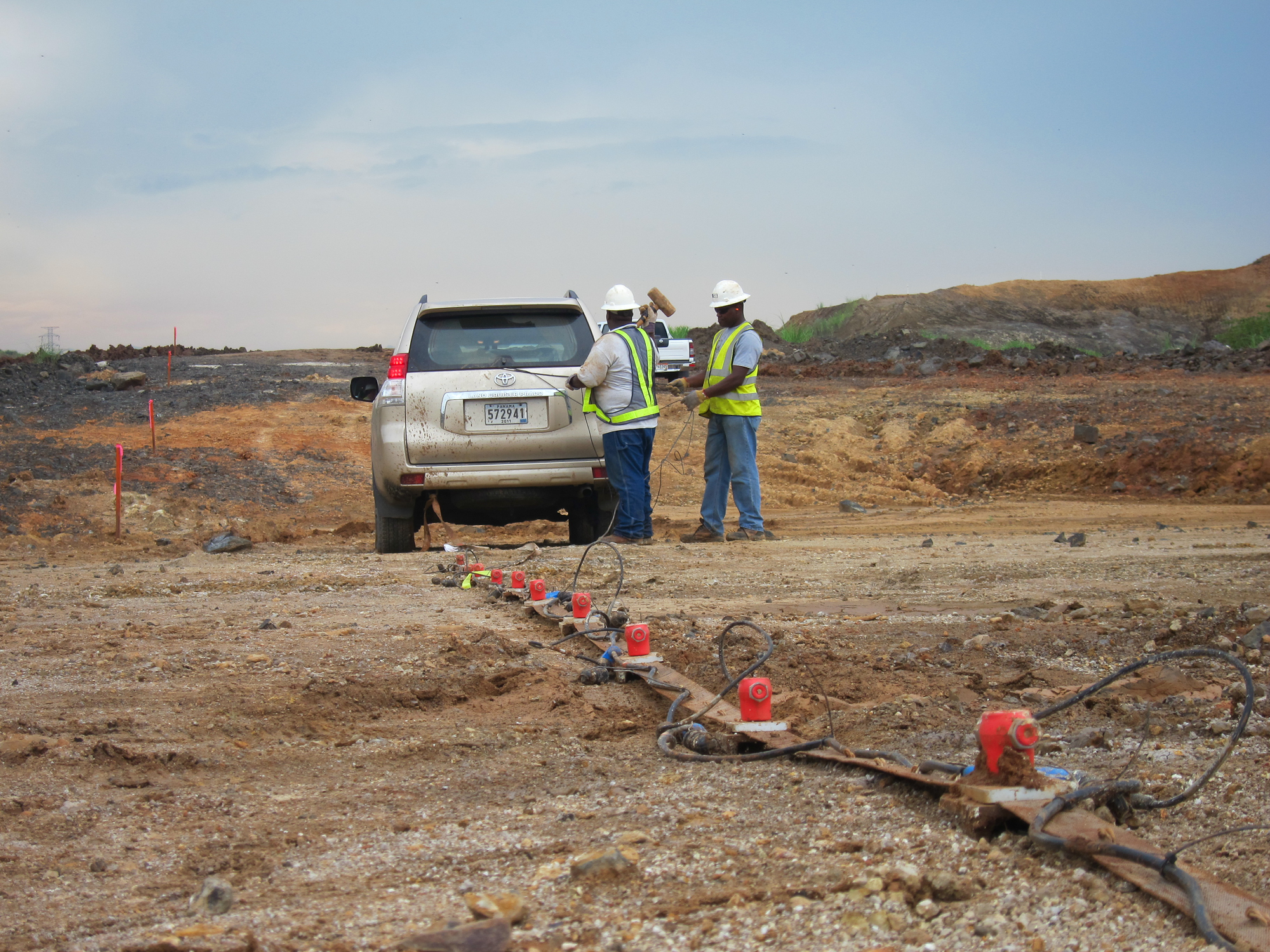Mapping Top of Rock with Seismic Refraction and ERI
Industrial Facility, Tennessee
An environmental assessment and remediation design project was conducted at a chemical manufacturing facility in eastern Tennessee. As part of the project, GeoView was asked to determine the depth to limestone bedrock underlying the project site and identify any suspected karst features within the upper portion of the limestone stratum.
The general geological setting across the project site was an unsaturated surficial clay stratum underlain by a competent limestone stratum. From a geophysical standpoint these two lithologies differ widely in terms of physical properties. The p-wave velocity contrast between unsaturated clay and limestone often varies by a factor of 5 to 10. The electrical resistivity contrast between these two materials often varies by 1 to 2 orders of magnitude. Because of the large contrast in both seismic velocity and electrical resistivity, the geophysical investigation was conducted using a combination of p-wave seismic refraction and electrical resistivity imaging (ERI). Both 2-dimensional and 3-dimensional data was collected at the site.
 A total of 2,300 ft of Seismic Refraction data and 4,900 ft of ERI data were collected at the site. There was an excellent correlation between the seismic determined depth to top of limestone bedrock and the depth to limestone bedrock determined from several confirmation borings performed along the geophysical transect lines. Typically, the seismic derived depths correlated the boring determined depths within 2 to 3 ft. Several suspected karst features were identified on both the seismic data and the multi electrode resistivity data. The higher resolution of the ERI method allowed for the identification of smaller karst-related features that woudl have otherwise been missed if only a seismic study had been performed.
A total of 2,300 ft of Seismic Refraction data and 4,900 ft of ERI data were collected at the site. There was an excellent correlation between the seismic determined depth to top of limestone bedrock and the depth to limestone bedrock determined from several confirmation borings performed along the geophysical transect lines. Typically, the seismic derived depths correlated the boring determined depths within 2 to 3 ft. Several suspected karst features were identified on both the seismic data and the multi electrode resistivity data. The higher resolution of the ERI method allowed for the identification of smaller karst-related features that woudl have otherwise been missed if only a seismic study had been performed.
Example Data - Click to Enlarge
Seismic Refraction Data showing Top of Rock and P-wave Velocities
ERI Data Showing Top of Rock and Possible Karst Features









